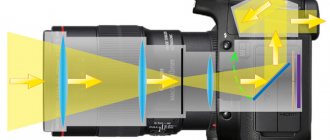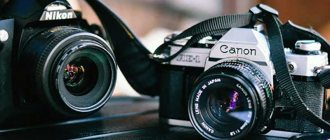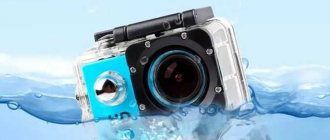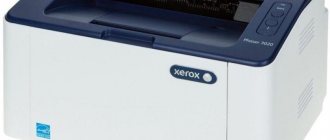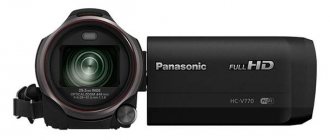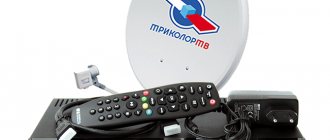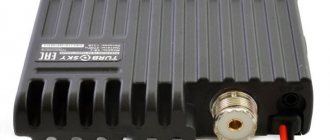Lens types and compatibility
In its simplest form, a lens is simply something that directs an image onto your camera's fixing device, i.e. film or matrix. If you've ever tried to take a photo without a lens attached to the camera, you probably know that not much happens. Based on this, we can say that a lens is necessary for creating images (pinhole and zone plates are the exception). However, with such a wide variety of lenses available for your camera, it can be difficult to choose the right one or even understand how one lens differs from another.
The question of lens compatibility may seem a little tricky. Each camera manufacturer produces devices with a certain type of lens mount. If I have a Nikon camera and a Sony lens, this glass will not be compatible with my device. But if I buy a lens from a Nikon D7000 and want to use it on my Nikon D700, then the lens will work (albeit with some caveats). There are also manufacturers such as Tokina, Sigma and Tamron, which produce the same lens, but with different mounts for different systems.
LENS
LENS, an optical system (or part of it) facing the object of observation or shooting, forming a real image, usually rotated 180° relative to the object. This image is either viewed visually through an eyepiece (in optical observation devices), or is obtained on a light-scattering surface - a screen (when projecting an image), or is fixed (recorded) on a photosensitive device. layer of photographic material or photoelectric. receiver Depending on the type of optical devices used. O. parts are divided into lens, mirror, mirror-lens, and kinoform. The most common are multi-lens lenses. The use of a large number of lenses makes it possible to create images with corrected aberrations of optical systems, but it reduces light transmission and increases the risk of spurious reflections, which reduce image contrast. An important advantage of mirror and mirror-lens lenses is the absence of chromatic aberrations and, as a consequence, the ability to work in a wide range of the spectrum, limited only by the reflective ability of mirror coatings; basic disadvantage – shielding (shading) of the center. parts of the entrance pupil, which leads to a deterioration in image quality and additional light loss (see also Mirror-lens system). In kinoform lenses, along with lenses and mirrors (or without them), synthesized phase holograms (so-called kinoforms), which are similar in their aberrations, are used. properties in monochromatic. light to lenses with aspherical surfaces. Chromatic aberrations of film forms do not depend on the properties of the material from which they are made, but are determined (similarly to diffraction gratings) by the spatial frequency of the structure and the spectral range. The unusual dispersion properties of film forms allow, in combination with lenses made from conventional brands of optical lenses. glass, obtain O., with high image quality and a fairly simple design. The use of kinoform lasers, which do not contain conventional lenses and mirrors, is possible only in combination with lasers with highly monochromatic radiation.
Basic The parameters of any lens are: focal length (see Cardinal points and Focus of an optical system), which, at a given distance of the object from the lens, determines its optical value. magnification (scale of the generated image); diameter of the entrance pupil O. (see Aperture in optics); relative aperture and aperture ratio expressed through it; angular field (see Field of view). The quality of the image formed by O. is characterized by: resolution, coefficient. transfer of image contrast (the ratio of the contrasts of the test object in real lighting conditions and in the so-called standard conditions - when illuminated by an equally bright hemisphere), coefficient. integral and spectral transmittance of light, coefficient. light scattering in the field of vision, illumination drop across the image field, etc.
By the nature of the optical modern image correction O. are divided into anastigmata (complex multi-lens O., in which astigmatism and other aberrations, including the curvature of the image field, are significantly reduced; at high aperture ratio it gives a high-quality image over the entire field; the main photographic O.), achromats (O. with partially corrected chromatic and spherical aberrations, usually consisting of two – collective and divergent – glued lenses made from types of optical glass that are unequal in light dispersion), apochromats (characterized by a more complete elimination of chromatic aberrations compared to achromats) , which is achieved by using lenses made of special types of glass and introducing mirrors into the optical system), planchromats and planapochromats (Ops with partial or full chromatic correction, in which the curvature of the image field and the chromatic difference in magnification are corrected; the most advanced O.) .
Based on their purpose, photographic materials are distinguished. O (used in cameras, film cameras, video cameras, etc.), projection O. (in photographic enlargers, slide and epi projectors, film projection devices), O. observation. optical instruments (spotting scopes, binoculars, telescopes, microscopes, etc.), as well as reproduction lenses.
Photographic lenses, or photographic lenses (these also include similar lenses for transmitting television cameras, night vision devices, thermal imagers, etc.), create an advantage. reduced images of distant objects. The scale of the image created by O. is proportional to the focal length f, and the illumination is inversely proportional to the square of the aperture number K (K=f/D, where D is the diameter of the entrance pupil). The maximum aperture value at which aberrations can be corrected is 0.5; the actual values achieved are K⩾0.6 (for most photographic lenses 3>K⩾1.2). Photographic lenses usually consist of 3–6 lenses (for cameras) and 9–13 lenses (for film cameras). There are normal or universal lenses (in which the focal length is approximately equal to the frame diagonal; suitable for any shooting), long-focus and short-focus (with focal lengths, respectively, greater or less than the frame diagonal; the former are mainly used when shooting distant objects with a large magnification, the second - for shooting large objects at close range). There are photographic lenses with variable focal length, which can be arbitrarily changed during the shooting process within the limits determined by the design. See also Shooting lens.
The images of television cameras and night vision devices do not differ fundamentally from photographic lenses. Thermal imagers operating in the far infrared region of the spectrum (8–14 microns) use optical devices. materials with refractive indices n>2 (germanium, zinc selenide, chalcogenide glasses), which makes it possible to reduce the number of lenses compared to lenses with similar characteristics for the visible or near-IR regions of the spectrum. The small dispersion of Ge makes it possible to create lenses, all lenses of which are made of this material, without using special materials. measures to eliminate chromatic aberrations.
The lenses of spotting scopes, binoculars, and telescopes create an intermediate image of distant objects in the front focal plane of the eyepiece; They have a long focal length, high resolution and high aperture ratio, which is especially important for observations in low light conditions. Because means. distance of observed objects viewed through a telescope or telescope, they are characterized not by linear, but by angular dimensions. Accordingly, the characteristics of this group of lenses are angular magnification, angular resolution, and field of view angle. With lens diameters not exceeding 100 mm, the most common lens is one consisting of two lenses glued together. For larger diameters, the lenses are not glued together. Starting from a diameter of 500–800 mm, mirror optical lenses are used, which is due to the difficulties in obtaining large optical blanks that are uniform in refractive index. glass The aperture numbers of telescopes are usually K⩾3; angular margins do not exceed 10°; resolution limit ε – min. The angle (in seconds) between luminous objects of equal brightness (for example, stars), which are visible separately, is determined by the formula ε = 140/D, where D is measured in millimeters.
The lens of a microscope is the most important part of its optical. a system that creates an enlarged image of the object of observation in the front focal plane of the eyepiece. The image scale is inversely proportional to the focal length of the lens and ranges from approximately 1.5 to 100 times or more. The resolution limit of the microscope (the minimum distance between the centers of the luminous points of the object, visible separately) is determined by diffraction. phenomena in the ocean and is calculated by the formula ε=0.6λ/A, where A is the numerical aperture (usually ranges from 0.01 to 1.4).
Projection screens create enlarged images of flat objects (movie frames, slides, microfilms, etc.) on reflective and translucent screens; Compared to film cameras, they have increased (2–2.5 times) resolution, but smaller angular fields and aperture numbers (K⩽1.8), and have a high coefficient. light transmission (0.8–0.9).
Reproductive images, used in reprography and for photolithography in the production of microcircuits, create reduced images of flat originals of drawings, texts, drawings, and templates; have increased resolution, determined by diffraction and reaching 1500 mm–1 for photolithographic. O. and 150 mm–1 for reprographic. ABOUT.
Focal length
Focal length is perhaps the most important factor that differentiates one lens from another. It is expressed in millimeters and corresponds to the angle of the field of view. The lower the number, the wider the angle. For example, a 20mm lens is wide-angle on most SLRs (this also depends on the sensor size, we'll talk about that later). At the other end of the range is the 200mm lens, which is a telephoto lens.
Technically, the measurement in millimeters is the distance from the center of the lens to the film or sensor when focusing at infinity, but given the complexity of the design, the optical and physical centers may differ. To better understand this and other principles, stand in a slightly shaded room and point your lens at a bright window. Move the lens closer and further. When you are at the correct distance, you will see an image of the window through the viewfinder.
"Zoom" and "fix"
All lenses can be divided into two main categories: lenses with a fixed focal length (“fixes”) and lenses with a variable focal length (“zooms”, tracing paper from the English “zoom”).
"Zoom" and "fix"
Many new photographers often don't recognize the benefits that can be gained from using prime lenses. Compared to zooms, primes are sometimes less expensive and can have larger apertures than is possible with zooms. This is why primes are often the best (and sometimes only) tool for shooting in very low light conditions. While zooms are more flexible and have a wider range of uses, don't ignore the versatility of primes.
For me, I love primes because they force me to spend time on the shot. Without the ability to use the zoom ring to change the composition, I'm forced to rely on my feet to create the scene. I also find primes to be much more effective when it comes to reducing depth of field and visually isolating your subject.
Remember that there are both amazing photographers who shoot exclusively with primes, and equally good ones who shoot only with zooms. My standard kit includes both as I find it to be the most cost effective way to cover all areas of shooting.
Line of lenses
If you're looking for your first prime lens to try out, Canon and Nikon offer 50mm f/1.8 autofocus lenses for around $100. A focal length of 50mm is usually considered normal, not a wide angle and a short focal length lens. These are inexpensive lenses that are great for portraits and are a good option if you want to try primes for little money. In my first year of shooting experience, the Nikon 50mm f/1.8 lens was attached to my camera 75% of the time.
Normal lens
In film times, a “normal” (standard) lens was considered a “fifty-kopeck” lens, but with the advent of times of smaller matrices (after all, a full frame is now too expensive for an enthusiast), it was replaced by a 35-mm lens, although many continue to use fifty-kopeck lenses, even though their coverage angle has been reduced completely to a moderate portraiture.
There is little that is normal in the lens - if we exclude human peripheral vision, a 50 mm lens gives exactly the same picture that a person sees, and therefore all proportions are respected (wide-angle lenses differ in this - they simply capture part of the field from peripheral vision). Actually, before this was enough - then it was just “zooming with your feet.” Today it has been replaced by a real zoom.
In essence, of course, there is nothing to replace fifty dollars with - this is the very line between a wide-angle and a long-focus lens on which more than one generation of successful photographers has grown up. Usually they make it quite fast, about f/1.8, and for ridiculous money, about 100 bucks, which many people buy - however, when everyone around is with zooms, the lens still loses in terms of versatility, but it quickly teaches the photographer how to play within the frame. In other words, lenses of this type are more for training than for everyday use in different situations - the angle is insufficient for indoors, and you won’t be able to take a normal portrait.
Sensor size and focal length
At the beginning of this article we touched on the issue of compatibility. As we've already learned, lenses made by one manufacturer are likely to be compatible with other cameras from the same manufacturer. However, it is necessary to take into account the difference in camera matrices.
For the purposes of this article, two types of camera sensors are relevant: a full frame sensor has the same dimensions as a frame on 35mm film. Full frame cameras such as the Nikon D700 and Nikon D3, as well as Canon's 5D and Mark III, are the first tier of DSLR cameras. Most other cameras have a crop factor or are DX cameras (DX is a sensor format developed by Nikon). This means their sensors are slightly smaller.
Lenses when used on crop factor cameras provide a longer focal length than they have on cameras with a full frame sensor. If you put a 50mm lens on a crop factor camera and take a photo, and then take a photo with the same lens on a full frame camera, you will find that the image from the crop factor camera is “larger” (i.e. larger). approximated) due to this crop factor.
DX/FX illustration – the circle represents the area perceived by the human eye, while the red frame represents what a full-frame camera can capture. Inside it is a blue frame that shows the camera's image angle with crop factor.
In addition, camera manufacturers are able to benefit from introducing crop factor lenses. This is because it requires less glass to project an image onto a smaller sensor. As a result, smaller and lighter lenses are available for crop factor cameras. The downside to this is that these dedicated lenses do not perform accurately on cameras with full frame sensors. But full frame lenses work well on crop factor cameras.
Canon calls its dedicated crop factor lenses "EF-S", while Nikon refers to these models as "DX". Nikon calls full frame cameras "FX" and Canon simply calls them full frame cameras. This is an important point when choosing both cameras and lenses. If you try to use crop lenses on a full frame camera, you will get one of two results. The first is that the camera will automatically crop the frame to a frame format with a crop factor and lower resolution, or the second is that you will see a vignetting effect (a drop in brightness closer to the edges of the frame) due to the fact that the “covering field” of the lens is not large enough, so that the image is correctly projected onto a full-frame sensor.
What you need to know is that if you put a 50mm lens on a crop factor camera, it will perform approximately the same as a 75mm lens on a film or full frame digital camera. The crop factor is usually 1.5 - 1.6. Conversely, if you shoot with a 200mm lens on your cropped camera and then switch to full frame, you need a 300mm lens to reproduce the same area of the image. The same thing happens with a wide-angle lens. If you prefer to shoot with a 28mm lens on your film camera, you'll need to use an 18mm lens to get a similar effect on your new crop factor digital camera.
Important characteristics of photographic lenses:
Focal length
Focal length is one of the main physical characteristics of any optical system: objective, lens, telescope, microscope, etc. In simple terms, the focal length of a lens is the distance from the center of convergence of the optical rays inside it to the camera matrix. Focal length is usually measured in mm. The degree of magnification and viewing angle depend on the focal length. The shorter the focal length, the wider the viewing angle you can get in the photo.
technix.by
469 rub.
All stores (17)
Canon EF-S 24mm f/2.8 STM Lens
from 420 to 599.53 rub.
Wide Angle; mount: Canon EF-S; maximum aperture F/2.8; filter diameter 52 mm; autofocus motor type: stepper (STM); weight 125 g.
Description Where to buy (17)
In contrast, a long focal length implies a small viewing angle, and such lenses can photograph distant objects.
technix.by
828 rub.
All stores (7)
Nikon 50mm f/1.4D AF Nikkor Lens
from 820 to 930.93 rub.
Portrait; mount: Nikon F; maximum aperture F/1.4; filter diameter 52 mm; autofocus motor type: micromotor; weight 230 g.
Description Where to buy (7)
Professional photographers advise starting to learn the basics of creativity with lenses with a fixed focal length.
Based on focal length, lenses are divided into wide-angle, standard, fixed focal length, telephoto and zoom (variable focal length) lenses.
We'll tell you more about them below.
Aperture and aperture
Aperture refers to the throughput of a lens. It shows how much light energy can pass through the lens (after all, some of the light is lost). The higher the aperture ratio, the better quality images can be obtained in low light conditions. Aperture values depend on aperture and focal length. It is equal to the ratio of the maximum open aperture to the focal length. Indicated by the numbers 1:1.8 or f/1.8. Here 1.8 is the aperture number. The smaller it is, the greater the aperture ratio of the lens. Thus, an f/1.8 lens collects more light than an f/2.8 lens, making it preferable to use in low light conditions.
A few words about what a diaphragm is. Simply put, the aperture is a design made of special petals inside the lens that allows you to adjust the light flux. The most obvious way to compare the work of the diaphragm is with the pupil of the human eye. The pupil regulates the amount of light that enters the retina of the eye. In bright light, it narrows, protecting the retina from damage, and in the dark, our pupils are maximally dilated to absorb more light. When they say “get used to the dark” it means that the pupils need time to dilate as much as possible. Therefore we begin to see better.
The situation with the diaphragm is similar. The wider the aperture, the more light enters the sensor, resulting in brighter photos in low-light conditions.
Aperture has certain values. The aperture value is indicated by the so-called aperture row - this is a sequence of numbers 1.4, 2, 2.8, 4, 5.6, 8, 11.
The ratio of the focal length of a lens to the size of the aperture opening is called the f-number. It shows how open the aperture is. Denoted as f/x or f:x, where f is the focal length and x is the diameter of the lens.
Depth of field
Depth of field is the distance in an image at which objects are perceived as sharp. This parameter is also closely related to aperture. The smaller the aperture value, the greater the depth of field, and the lower the aperture value, the lower the sharpness. Based on this, landscapes and architecture are photographed at large aperture values so that the entire frame is in sharpness, and portraits or macro photography take place at small aperture values so that the subject of the photo is separated from the surrounding background.
technix.by
239 rub.
All stores (3)
Nikon AF-P DX NIKKOR 18-55mm f/3.5-5.6G VR lens
from 185 to 239 rub.
Standard; mount: Nikon AF; maximum aperture F/3.5-5.6; filter diameter 55 mm; autofocus motor type: stepper (STM); weight 205 g.
Description Where to buy (3)
Image stabilization
Image stabilization helps prevent blurry photos caused by errors in focus, shutter speed, and aperture. As a rule, blurry photographs are obtained in low light, when, to compensate for the lack of light, they set an increased shutter speed. Without the use of a tripod, image stabilization is a necessary option. After all, the higher the shutter speed, the more difficult it is to get a high-quality photo.
An important advantage of image stabilization is that it allows you to take high-quality pictures in difficult conditions. This is very important, in particular, for reportage photography, outdoor photography and amateur photography.
Image stabilization can be:
- digital - uses exclusively camera software. For digital stabilization to work, a part of the matrix is allocated, and the image is shot with a crop factor. The image moves across the matrix, dampening vibrations. But there is one caveat - the more intense the digital stabilization works, the lower the image quality. Therefore, it is most often used in the most budget cameras, or when shooting video, as well as in action cameras and smartphones. In more advanced camera models it is present only as an additional option;
- optical - implemented not in the camera itself, but in the lens. There is a movable optical element that dampens camera vibrations. Detachable lenses with optical stabilization will significantly expand the capabilities of your camera. The negative aspects of such lenses include their high cost and the possible negative impact of an additional optical element on image quality.
technix.by
279 rub.
All stores (7)
Canon EF-S 18-55mm f/4-5.6 IS STM Lens
from 279 to 717.57 rub.
Standard; mount: Canon EF-S; maximum aperture F/4.0-5.6; filter diameter 58 mm; autofocus motor type: stepper (STM); image stabilizer; weight 215 g.
Description Where to buy (7)
You need to keep in mind that you need to get used to each lens with optical stabilization, get used to it, and experimentally find the optimal shooting techniques. The fact is that different lens manufacturers have developed their own image stabilization systems. They may work better in some places, worse in others. Moreover, these systems are even called differently. For example, Canon was the first to master stabilization technology and since then the name “Image Stabilization” has remained with it. Therefore, different companies call this technology differently. So, Nikon has Vibration Reduction (VR), Sony has Optical SteadyShot (OSS), Tokina has Vibration Compensation Module (VCM). If the lens is equipped with optical stabilization, there will be a corresponding abbreviation on its body, for example in the case of Nikon it is VR.
Wide angle lens
Wide-angle lenses are often used for landscape photography and any other type of photography in which it is important to include a large scene in the frame. By wide-angle lens, I usually mean a lens with a focal length of less than 35mm for a camera with a full-frame sensor and less than 24mm on a camera with a crop factor - a larger distance is more likely to refer to “normal” lenses.
The shot was taken with approximately a 20mm wide-angle lens.
Rating of DSLR lenses
| Photo | Name | Rating | Price | |||
| Prime Lenses | ||||||
| #1 | Sony FE 50mm f/1.8 (SEL-50F18F) | ⭐ 99 / 100 1 - voice | Find out the price | |||
| #2 | Nikon 50mm f/1.8 D AF Nikkor | ⭐ 97 / 100 | Find out the price | |||
| #3 | Canon EF 50mm f/1.8 II | ⭐ 97 / 100 | Find out the price | |||
| #4 | Pentax SMCP-DA 50mm f/1.8 | ⭐ 96 / 100 | Find out the price | |||
| #5 | YongNuo AF 50mm f/1.8 II Canon EF | ⭐ 94 / 100 | Find out the price | |||
| Wide Angle Lenses | ||||||
| #1 | Nikon 35mm f/2D AF Nikkor | ⭐ 100 / 100 | Find out the price | |||
| #2 | Samyang 8mm Ultra Wide Angle f/3.5 Fisheye | ⭐ 97 / 100 | Find out the price | |||
| #3 | Nikon 35mm f/1.8G AF-S DX | ⭐ 96 / 100 | Find out the price | |||
| #4 | Canon EF-S 24mm f/2.8 STM | ⭐ 94 / 100 | Find out the price | |||
| #5 | Pentax D FA 35mm f/2 HD | ⭐ 93 / 100 | Find out the price | |||
| Varifocal Lenses | ||||||
| #1 | Canon EF 75-300mm F/4-5.6 III USM | ⭐ 98 / 100 1 - voice | Find out the price | |||
| #2 | Sony 55-210mm f/4.5-6.3 E (SEL-55210) | ⭐ 97 / 100 | Find out the price | |||
| #3 | Pentax SMC DA 50-200mm f/4-5.6 ED WR | ⭐ 95 / 100 | Find out the price | |||
| #4 | Nikon 70-300mm f/4.5-6.3G ED VR AF-P DX | ⭐ 93 / 100 | Find out the price | |||
| #5 | Tamron AF 70-300mm f/4-5.6 Di LD MACRO 1:2 (A17) Nikon F | ⭐ 92 / 100 | Find out the price | |||
Which DSLR lens would you choose or recommend purchasing?
Take the survey
Medium/Normal Lens
The lenses in this line are designed for walking. An example of this type is the classic 50mm lens, a cornerstone of photography for decades. These types of lenses are often called “normal” lenses because they perceive perspective in much the same way as the human eye. These include lenses with a focal length of 40-75mm on a camera with a full-frame sensor and 35-50mm on a camera with a crop factor.
Shot at approximately 50mm, the frame is in the “normal” range.
Maximum aperture
This is the maximum possible aperture value for this lens. For zoom lenses, the range of the maximum possible aperture is often specified. For example, f/3.5-5.6 for a lens with a focal length of 18-105mm means that at 18mm the maximum aperture will be f/3.5, and at 105mm it will be f/5.6.
As you know, the smaller the aperture value, the shallower the depth of field and the more blurred the background. All lenses show maximum image quality at average aperture values of f/8 - f/11.
Telephoto lens
Telephoto lenses allow you to photograph subjects at great distances. Typically, the classification of this type begins at values around 85mm. If you have a need to take close-up portraits or something in the distance, you may need a telephoto lens. These lenses are indispensable for wildlife photography, sports and reportage.
Shot at approximately 130mm, telephoto lens.
Remember that there are also lenses that do not fit into this basic classification due to the wide range they cover. Both Nikon and Canon have 18-200mm zoom lenses in their lineup, covering the entire focal length range.
Basic lens parameters.
There are two main parameters that characterize a particular lens:
- Focus distance is the distance from the camera sensor to the lens lenses.
- Aperture.
The focus distance can be either constant or variable. Variable focal length lenses are called zoom lenses. The quality of a zoom lens directly depends on the number of variable distances - the more of them, the better the lens is considered. Additionally, the magnification power of any zoom lens is a number obtained by dividing the longest focal distance by the shortest. Thus, if you have a 17-55 mm lens, then the magnification of your lens is 3.
Diaphragm
Aperture is another big factor that I think is very important when describing a lens. Aperture, or more precisely maximum (widest) aperture, determines the amount of light that can pass through the lens. The best lenses let in more light, allowing you to shoot in low-light conditions without using a flash.
As mentioned above, primes usually allow more light to pass through and have a larger aperture. This is expressed, oddly enough, by a smaller aperture number. Some of the best primes have an aperture of f/1.8 or f/1.4. If you're using a kit lens, your widest aperture will likely be in the f/3.5-5.6 range.
This is also what we call a variable aperture , and these are typically inexpensive lenses. This means that if you zoom in, the lens allows less light to pass through, making the aperture number larger.
Professional-grade zooms typically have a constant aperture of f/2.8—for example, Nikon's 80-200mm f/2.8 lens. Lenses with wide maximum apertures are often referred to as "fast".
Aperture example
Don't get me wrong, variable aperture lenses certainly have their uses. Typically these lenses are lighter and cheaper. It's great to have lenses like this for traveling or on the go. While f/2.8 lenses are great, you may find that you don't carry your camera with you because it's inconvenient.
Aperture (along with shutter speed and ISO) is used to control exposure, meaning how bright or dark your photo will be. Aperture also controls depth of field. The greater the depth of field, the more objects will come into focus, say everything between 1 and 5 meters away from the camera if you are focusing on a subject 2 meters away from you. Depth of field is achieved by “stopping down,” which means making the aperture opening smaller by increasing the aperture number (f/8, f/16 or higher). The shallow depth of field allows only objects to be included in the focus area, for example, those located at a distance of 1.5 to 3 meters when focusing at 2 meters.
Another note about aperture: lenses usually don't achieve maximum sharpness at their widest aperture. If I'm going to get the sharpest image possible with my Nikon 35mm f/1.8 lens, I usually set my aperture to around f/3.5.
whale
I mentioned whale optics in the introduction, but not all aspects of this optics may be known to you. I’ll try to expand on this concept!
A kit lens is an optic that comes with the body of the camera when sold. Its viewing angle is designed so that it coincides with the viewing angle of the human eye, without taking into account peripheral vision.
Branded manufacturers offer optics with variable focal length – 18-55 mm – as standard ones. The largest aperture values are f/3.5 – f/5.6.
Other names : regular, complete, regular.
Peculiarities:
- Versatility. Application in any genre of photography.
- Low aperture values make it difficult to shoot in low light conditions.
- The kit lens helps you understand which genre is closer to you, so that in the future you can make the right choice when purchasing new specialized optics.
- Includes a range of the most commonly used focal lengths.
- Low price.
- The picture quality is at an intermediate level, between low and high.
Application:
- Portrait;
- Scenery;
- Household photography.
Representatives:
- Nikon 18-105 mm f/3.5-5.6;
- Canon 18-55mm f/3.5-5.6.
You can find out more in the article - What is a whale lens.
Autofocus
Autofocus is another important lens characteristic. Almost every modern lens has autofocus, but there is information about this feature you need to know the next time you're shopping for a camera or lens.
First, let's take a look at the Nikon system. Nikon autofocus lenses have one of two markings: “AF” and “AF-S”. Both of these markings indicate that the lens is capable of autofocusing, albeit in different ways. "AF" lenses do not have a focusing motor built into the lens, but instead rely on the camera itself to focus the lens. This is done by using a “screwdriver” motor in the camera. It is pictured below.
Here you can see the "screwdriver" type of motor used to perform automatic focusing in Nikon "AF" lenses.
However, not all Nikon cameras can accept these lenses, because some types of cameras do not have a “screwdriver” motor. All entry-level cameras such as the D40, D5000 and D3000 lack it. This doesn't mean that these cameras aren't autofocus, only that they can't autofocus with non-AF-S lenses. This is a good reason to upgrade to higher end cameras (D90, D300, etc.) because they open up new possibilities in terms of compatibility with a wider range of lenses.
Other Nikon autofocus lenses labeled "AF-S" are much easier to understand. They have a motor built into the lens itself, and autofocus can be used on any modern Nikon camera. Also, some AF-S systems are faster than screwdriver motor systems will ever be, so many of Nikon's new lenses are AF-S lenses.
Canon lenses are much easier to navigate. Every modern Canon "EOS" lens can autofocus on any Canon EOS camera. The "USM" (Utlrasonic Motor) label means the motor is built into the lens, but every Canon EOS camera will still focus with any Canon lens.
Each camera and lens manufacturer has a slightly different system. If you shoot with a Sony or Pentax, make sure to read the manual and online information to explore the different uses of autofocus. There's nothing worse than spending a ton of money and finding out that your camera and lens aren't autofocus compatible.
The best DSLR lenses for beginner photographers
If you are completely tired of the standard “whale” glass of your camera, it’s definitely time to expand your collection. You shouldn’t buy everything at once, since you can get by with a limited selection of lenses that will cover all the areas of photography you need. However, you will be prepared for any situation and will be able to choose the right glass for every occasion.
For those who are new to photography, choosing and purchasing lenses for a camera is a very labor-intensive process. There are too many things: brands, types of glass, focal lengths. In the end, you should always keep in mind that any lens is not cheap. Yes, creating your own selection of lenses is a significant investment, but if you are serious about connecting your life with photography, it will pay off. In each category you can find a reasonable balance of price and quality, and select an excellent collection. We will limit ourselves to +-20,000 rubles and see what the lens market is ready to offer us.
Prime Lenses
Every photographer simply must have at least several of these lenses in his arsenal. Unlike zoom glasses and standard kit lenses, which allow you to enlarge the image, prime lenses have one focal length, but this is where they achieve perfection. Therefore, in terms of quality, they surpass zoom glasses, providing you with optimal sharpness, contrast and a minimum of aberrations.
Standard prime lenses are a great option for a beginner. With a focal length of 50mm, they provide results that are as close as possible to what the human eye sees. The picture on them turns out to be naturalistic, and the price is quite affordable.
Yongnuo 50mm f/1.8
This lens is designed specifically for Canon DSLRs with EF Mount. Its characteristics can be compared with the similar Canon 50mm f/1.8, but it costs almost half as much. The maximum aperture of f/1.8 allows you to shoot in low light conditions, while the minimum aperture of f/22 allows you to achieve shallow depth of field. Similar glass from the same manufacturer, by the way, can also be found for Nikon.
Pentax SMCP-DA 50mm f/1.8
These fast, lightweight, and well-built lenses have been developed specifically for Pentax K-mount cameras. The Pentax SMCP-DA 50mm f/1.8 copes well with shooting in low light, creates spectacular bokeh and, in principle, allows you to take high-quality photos. This is an excellent glass for portrait photography, with a maximum aperture of f/1.8 and a minimum of f/22.
Canon EF 50mm f/1.8
If you can afford to go a little beyond your tight budget and prefer to use original glass on your camera, then the Canon EF 50mm f/1.8 is a lightweight, compact and quite affordable lens that, like its analogues, is great for shooting portraits, but It also copes effectively with action shots and night photography. It has a focal length of 50mm on full frame cameras, on cropped APS-C matrices, its effective focal length changes to 80mm. At the same time, with this lens you can get precise color balance, minimized reflections and flare, and rich bokeh.
Nikon 50mm f/1.8 D
The Nikon 50mm f/1.8 is a fast prime lens that delivers natural, sharp images and exceptional performance in all lighting conditions. All this is offered at a very affordable price. It is compatible with FX DX, DX in crop mode and 35mm film.
Sony 50mm f/1.8 DT
Technically, the Sony 50mm f/1.8 DT is considered a standard prime lens, but considering that the 35mm focal length is equivalent to 75mm on APS-C sensors, it can serve as a short telephoto for beginners. It takes clear and sharp photos, allows you to get blurred backgrounds with gorgeous bokeh, and fast autofocus, thanks to SAM (Smooth Autofocus Motor) technology.
Olympus 25mm f/2.8
This standard lens is very thin and light, making it very easy to work with. It does a great job with portraits, landscape shots, and even macro photography in some cases. On a 35mm film camera the focal length is 50mm, but the camera also creates a natural perspective, so it is just perfect for everyday shooting.
Wide Angle Lenses
Wide angles provide a wider viewing angle, allowing us to fit more objects into the frame. This tends to work very effectively when shooting landscapes or architecture. But even if you're not much of a landscape enthusiast, you should definitely have at least one wide-angle lens in your collection. With it you get a completely different perspective than other lenses, and at the same time greater creative freedom.
Typically, the focal length on wide-angle lenses is 35mm or longer on full-frame sensors. Ultra wide lenses have a focal length of 24mm or longer. Plus, there are also such glasses as fisheye, although they are precisely the ultra-wide type.
Such lenses can also have either a fixed or variable focal length.
Pentax SMCP-DA 35mm f/2.4 AL
The Pentax SMCP-DA 35mm f/2.4 AL is an affordable wide-angle lens with a fast aperture and f/2.4 aperture. On a full-frame sensor, the focal length will be equivalent to 52.5mm, so this lens will do an excellent job with landscapes, portraits (better, of course, group ones), and many other tasks. Despite its low price, this lens offers photographers high image quality and resolution, contrast and sharp images, proving that you don't have to spend a fortune to get quality optics.
Canon EF-S 24mm f/2.8 STM
An ultra-thin and ultra-lightweight wide-angle lens from Canon offers plenty of features, easy transportation and high-quality performance. All this makes it a great glass for everyday shooting. It was originally created for Canon APS-C cameras, and they didn't skimp on its hardware either - it consists of high-quality lenses with anti-reflective coating, which suppresses glare, and uses an STM stepping motor for smooth and silent autofocus. Another advantage of this glass is the ability to manually focus.
Nikon 35mm f/1.8G AF-S DX
Designed for DX format cameras, this lens is ideal for users who require incredible performance at a low price. The focal length of 35mm on FX cameras gives as much as 50mm, providing a natural viewing angle and, in general, an image familiar to the human eye. This fast, quiet lens produces incredible image quality with rich, vibrant colors.
Samyang 8mm Ultra Wide Angle f/3.5 Fisheye
The Samyang company produces relatively inexpensive fisheye glass for Sony, Canon, Nikon and Pentax cameras. The Samyang 8mm Ultra Wide Angle f/3.5 Fisheye lens incorporates hybrid aspherical lenses to give you clear and sharp images. Multi-layer lens coating helps suppress glare and reflections, while the 180-degree viewing angle creates a dramatic perspective.
Nikon 28mm f/2.8D
Among standard wide-angle lenses, Nikon's 28mm f/2.8D provides a comfortable field of view of approximately 74 degrees without creating distortion at the edges of the frame. Compared to its peers in the same price range, it offers higher quality, especially for the money. Images from this lens are sharp, clear, and have beautiful, rich colors.
With this glass you can shoot landscapes, street photography, indoor photography and much more.
Varifocal Lenses
Well, here we come to those lenses that are considered the most convenient for various types of shooting. Already from the name it is obvious that if prime lenses offer us a fixed focal length, zoom lenses allow us to work with several. That is, with the same glass, you can shoot portraits, landscapes, reports and much more. Simply put, zoom glass gives us the ability to zoom in and out of a scene.
It is also obvious that zoom lenses are very useful when we need to shoot from long distances. But in any other case, a zoom lens (be it wide-angle, telephoto or any other) in a photographer’s arsenal will always be useful for varying perspective, composition and, in principle, everything that concerns the frame.
Sigma 70-300mm f/4-5.6 DG
This lens is available for Pentax, Sony, Canon and Nikon cameras. This is a telephoto zoom lens that offers high performance and great features at a reasonable price. Thanks to special low dispersion (SLD) glass elements, it reduces chromatic aberration. It also features fast and silent autofocus and manual focus capabilities, a macro switch allowing macro photography at focal lengths between 200mm and 300mm, and a maximum magnification of 1:2.9 to 1:2.
Tamron 70-300mm f/4-5.6 Di LD
This lightweight and compact telephoto zoom lens is almost ideal for outdoor photography - sports, wildlife, events, you can do it all with the Tamron 70-300mm f/4-5.6 Di LD. This lens is capable of working with both DSLR and film cameras. Like Sigma's counterpart, it has a macro switch that will allow you to take enlarged photos at focal lengths from 180mm to 300mm with maximum magnifications of up to 1:2.
In addition to being easy to transport due to its small size, this lens is also very durable, has fast and accurate autofocus, and photographs taken with it are sharp.
You can find inexpensive lenses for Canon and Nikon with similar focal lengths.
Nikon 70-300mm f/4-5.6G
This lens is suitable for portraits, travel photography, sports photography, events - whatever you want to shoot, you can shoot with the Nikon 70-300mm f/4-5.6G. This is one of the most affordable telephoto zoom lenses. For beginners, it will be an excellent assistant, since it has a lot of application possibilities. Light weight and small size will allow you to always carry it with you, and it is very easy to operate. For precise focus control, this lens has a manual zoom wheel. Fast and reliable autofocus (only supported on DSLRs with a built-in focusing motor), a wide range of focal lengths, and special lens coatings for improved light transmission and flare suppression truly make this lens a worthwhile investment.
Pentax SMCP-DA 50-200mm f/4-5.6
Designed specifically for Pentax DSLR cameras, this lens offers 4x magnification and is ideal for outdoor photography as it is weather-sealed and includes a special protective coating that allows it to repel dust, water and other nasties.
Among the features of the Pentax SMCP-DA 50-200mm f/4-5.6, what stands out is the high-quality glass, which allows you to get realistic colors in your photos. The autofocus system is very responsive and allows you to quickly switch to manual mode if necessary.
Sony 55-200mm f/4-5.6 DT
The lens from Sony is designed for SLR cameras with a cropped matrix. Otherwise, this is an excellent and capable telephoto lens that will provide focal lengths from 82.5 to 300mm. It is suitable for photographing wildlife, animals, sports and other events, and of course, portraits. It is designed with Extra Low Dispersion (ED) glass elements that help reduce chromatic aberration. Circular aperture blades allow you to defocus with ease, creating stunning bokeh. A separate plus is the built-in SAM, which provides fast and silent automatic focusing.
Canon EF 75-300mm F/4-5.6
The Canon EF 75-300mm F/4-5.6 is a compact and lightweight telephoto zoom lens with great capabilities. The first thing that needs to be noted is the impressive zoom capabilities, then, of course, the sharp, high-quality photos that this glass takes and the pleasant, effective bokeh.
All this is impressive, as is the fairly wide viewing angle of 32 degrees. Therefore, the Canon EF 75-300vv F/4-5.6 also copes well with landscape photography.
It is affordable and very easy to use, making this lens an excellent choice for any beginner.
